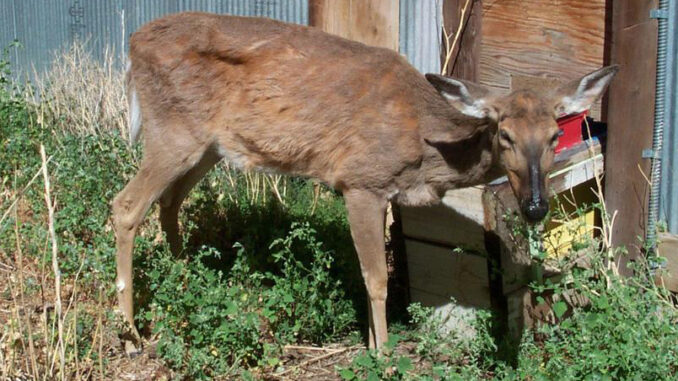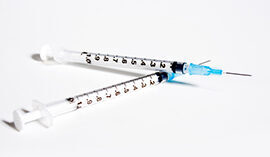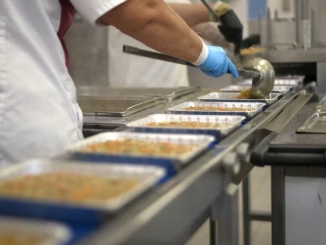
The North Carolina Wildlife Resources Commission (NCWRC) confirms a 2.5-year-old female white-tailed deer harvested in Franklin County has tested positive for Chronic Wasting Disease (CWD). The deer was hunter-harvested during firearms season and represents the first known case of the disease in Franklin County.
CWD is transmissible to other deer and spreads through infected saliva, urine and feces of live deer and the movement of infected deer carcasses and carcass parts. During early stages of infection, deer may appear healthy, therefore, NCWRC stresses to hunters the importance of taking precautions when transporting or disposing of deer carcasses as this may lead to moving CWD to new locations.
The disease has not been detected in Columbus, Robeson, Brunswick or Bladen counties. Robeson and Bladen are in the monitoring areas, due to a CWD case that was discovered in Cumberland County.
NCWRC is collecting data related to the distribution of the disease, due primarily to the cooperation of hunters who have submitted samples for testing of the disease. NCWRC’s Wildlife Management Division Chief, Brad Howard, said this new detection in yet another county further from the initial detections is disappointing, but illustrates that efforts to determine the extent of the disease in North Carolina are working.
“I want to point out that this detection in Franklin County, along with the last two unexpected CWD positive cases we detected in Johnston and Cumberland counties, doesn’t necessarily mean that CWD is spreading rapidly across the state,” says Howard “More likely it means that all the sample submissions we are getting from hunters is really helping to find the places where CWD has already gotten a foothold in the state. It’s likely that it’s been in these places for a few years and had not been detected.”

“As we continue to find the disease in new counties, hunters should be aware that CWD could be anywhere. We need to continue to test as many hunter-harvested deer as possible to determine the distribution of CWD in our state,” said Howard.
“It is also essential that we understand how important it is to safely dispose of deer carcasses. Deer hunters must be vigilant and mindful of carcass disposal. The last thing we want to do is inadvertently move it to yet another new location. We continue to stress don’t give it a ride.”
Howard confirmed that the current Surveillance Areas in the northwest and southeast portions of the state will remain unchanged.
“Franklin County will become a primary county, but not until next year. As with the detection earlier this season in Johnston County, the realities of establishing rules and ensuring hunters are aware of the changes during an open hunting season are challenging, therefore the rules will not change this season for Franklin County,” said Howard.
Hunters should still be mindful of this new confirmed detection and follow NCWRC’s carcass transportation and disposal guidelines to prevent the potential spread of the disease to other locations. NCWRC also recommends hunters submit deer harvested in Franklin and surrounding counties for testing. Hunters can use NCWRC’s interactive map for information on testing locations. Additional locations will be added to the map throughout the hunting season.
NCWRC recommends that whole deer carcasses and high-risk carcass parts remain in Franklin County or be taken to a processor or taxidermist participating in the NCWRC’s Cervid Health Cooperator Program for proper carcass disposal and test submission. Hunters should follow one of the following disposal methods if not taken to a Cervid Health Cooperator:
- Bury the deer remains where you harvest the animal when possible.
- Double bag deer remains for disposal at the closest landfill.
- Leave the deer remains on the ground where the animal was harvested.
Low-risk carcass parts, including boned-out meat, caped hides, antlers and cleaned skulls, cleaned jawbones and teeth, and finished taxidermy products are safe for transportation to areas outside of Franklin County.
























